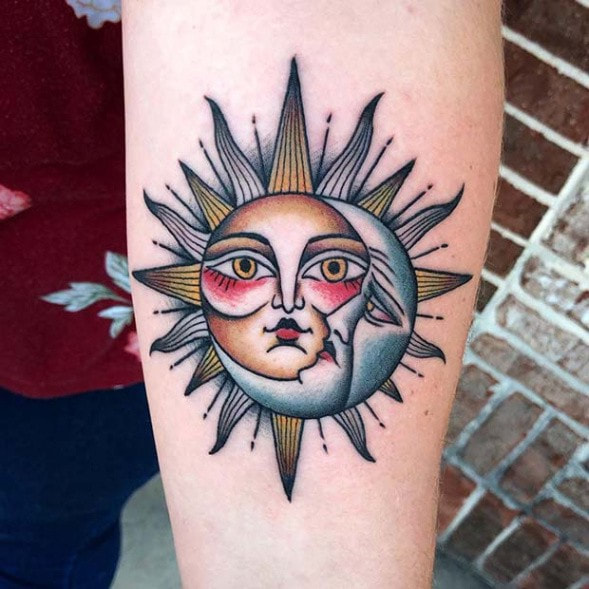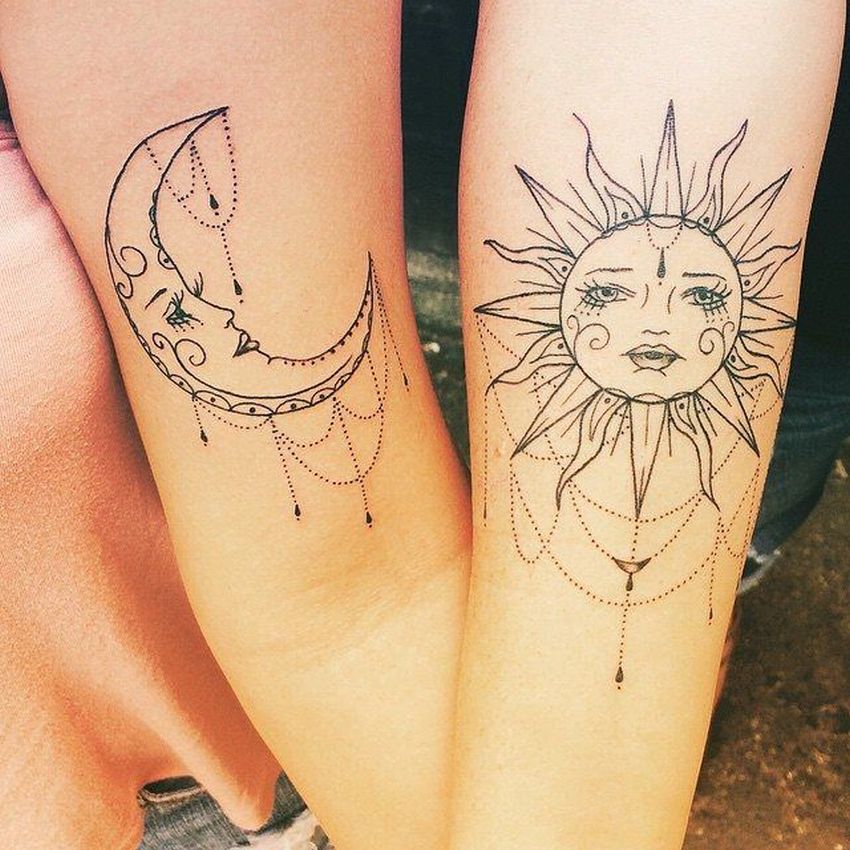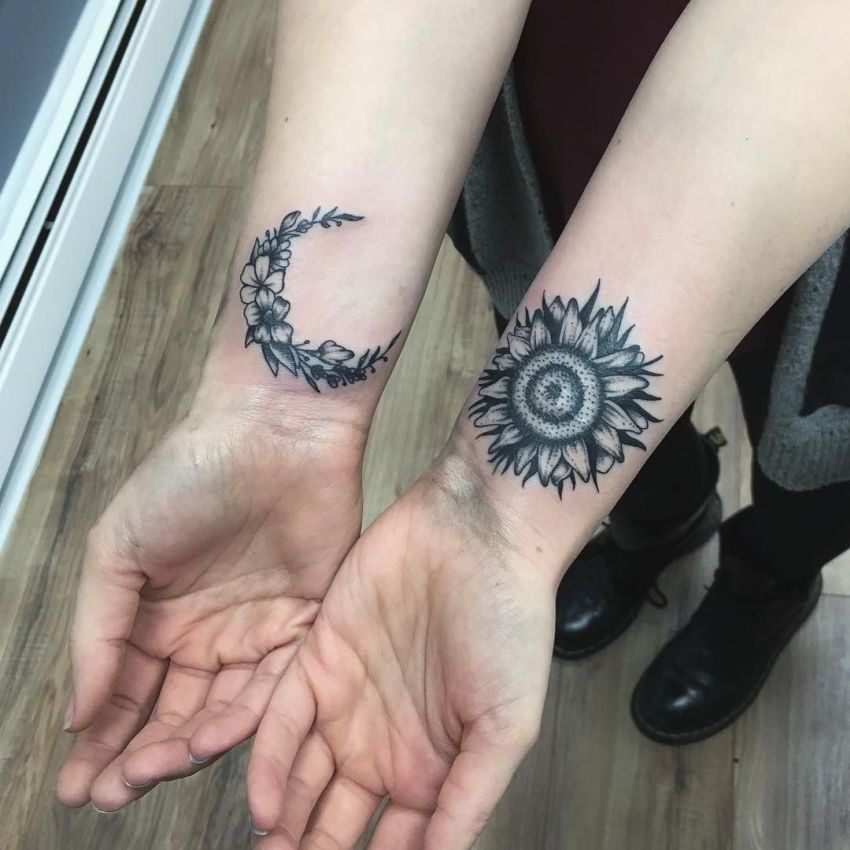Sun and moon tattoos are known to represent a merging of opposites, unity, and cooperation instead of conflict, and rebirth. For a large population just seeing the sun and the moon is a thrilling sight and having them both together as body art is a pleasure. Sun and moon tattoos as body art are popular today.
Almost any tattoo idea you have can be accomplished in one of these styles, so there are almost endless possibilities. The sun and the moon make for a beautiful matching tattoo: the sun as masculine energy and the moon as feminine energy depicted in attractive designs.
The options are endless, whether you are looking for something small or large. In addition to the crescent moon and other lunar traits, one can tattoo rays or circles on the sun.
There are few tattoo designs that transcend gender lines, such as sun and moon tattoos. An elegant fine line crescent moon tattoo for the feminine, a bold tribal sun tattoo for the masculine, and a delicate half moon tattoo against the simple sun as a tattoo etched in between.
Romeo and Juliet's sun and moon represent what?
Since seeing Juliet, he has all but forgotten how much he loved Rosaline. Juiet is represented by the sun, and a jealous girl by the moon on this scene.
The sun and moon tattoos look so cool that there's no reason not to get one. Below you will find 35 examples of sun moon tattoo designs that you can use for inspiration.
Together, what do the sun and moon represent?
Sometimes, the moon and sun will appear to be merged. There are two halves of the moon and two halves of the sun in the circle. A sun usually symbolizes power, strength, and rebirth while a moon represents femininity, often appearing as an ancient goddess or as the goddess of the moon herself.
In imagery and symbolism, the sun and moon are very powerful. Throughout the world, you will see these markings. There have been many interpretations of the sun and moon symbols throughout history, from Ancient Egypt to modern-day America. Tattooing powerful images on the body would not be surprising if they are so meaningful and powerful.
People who follow yin/yang beliefs are known to be very fond of sun and moon tattoos. They are very powerful opposites, and depending on where you find these symbols, they may have a symbolic significance. There will be different rules for different symbols in different cultures. In most places, the moon and sun have similar meanings, though.
Sometimes, the moon and sun will appear to be merged. There are two halves of the moon and two halves of the sun in the circle. A sun usually symbolizes power, strength, and rebirth while a moon represents femininity, often appearing as an ancient goddess or as the goddess of the moon herself.
In imagery and symbolism, the sun and moon are very powerful. Throughout the world, you will see these markings. There have been many interpretations of the sun and moon symbols throughout history, from Ancient Egypt to modern-day America. Tattooing powerful images on the body would not be surprising if they are so meaningful and powerful.
People who follow yin/yang beliefs are known to be very fond of sun and moon tattoos. They are very powerful opposites, and depending on where you find these symbols, they may have a symbolic significance. There will be different rules for different symbols in different cultures. In most places, the moon and sun have similar meanings, though.



